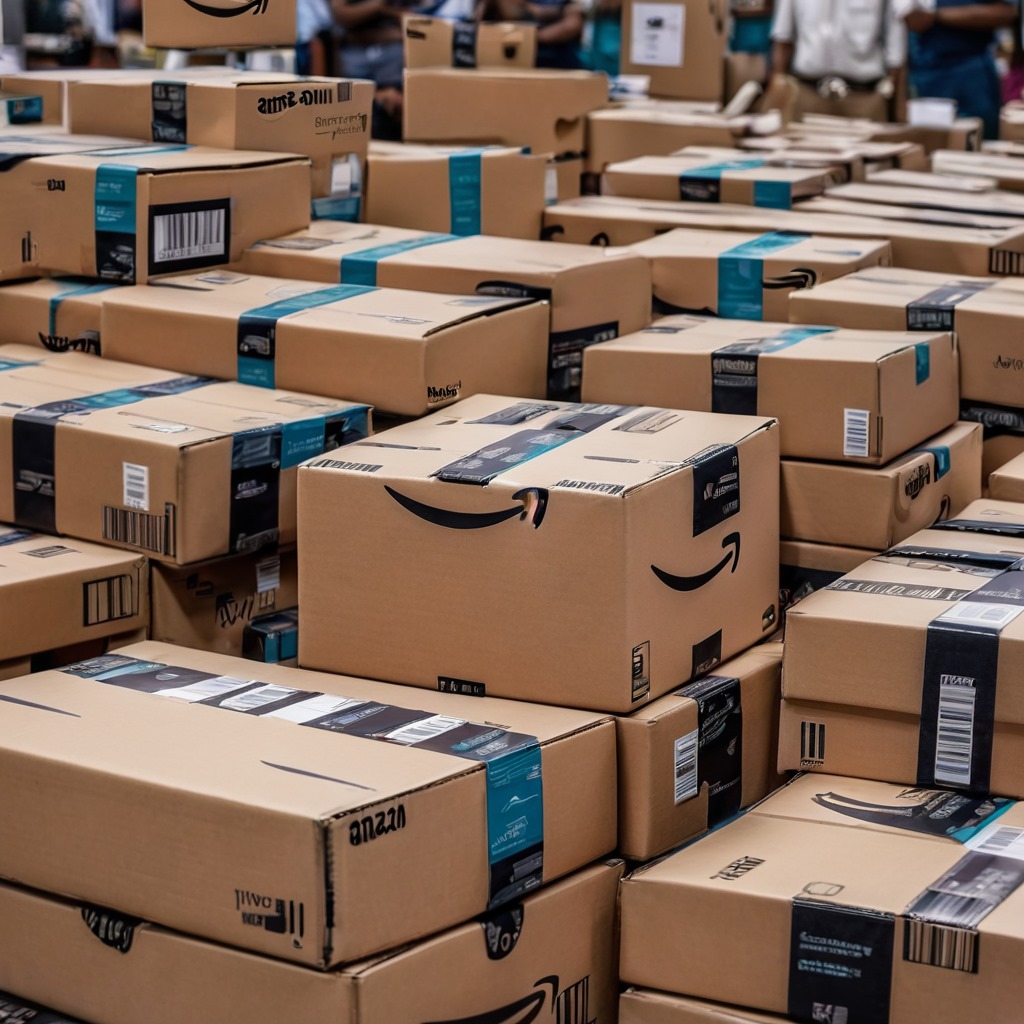With the audacious goal of taking a bigger chunk of the Indian e-commerce market Amazon India has announced the launch of Bazaar, a new low-cost, unbranded vertical. With this move Amazon is strengthening its position in the very competitive online retail market while demonstrating its deliberate attempt to meet the varied needs and financial limitations of Indian consumers.
Knowing Bazaar:
As envisioned by Amazon India Bazaar is a specialized marketplace that provides a broad selection of reasonably priced goods in a variety of categories from electronics to necessities for the home. This project demonstrates Amazon’s dedication to democratizing quality product access for customers from all socioeconomic backgrounds. Amazon hopes to address the price sensitivity that is common in the Indian market where value-for-money products frequently rule supreme by carefully selecting a selection of unbranded products.
Putting the Indian Customer First:
For e-commerce behemoths like Amazon India’s growing middle class and rapidly growing consumer base offer a lucrative opportunity. Serving Indian consumers varied tastes and spending capacities however continues to be a difficult task. Amazon aims to leverage the enormous potential of the budget-conscious market segment—which makes up a sizable chunk of India’s customer base—through Bazaar. Amazon wants to attract customers that are price conscious and value affordability over brand name so it offers unbranded alternatives at competitive prices.
Strategic Repercussions:
Amazon’s ability to quickly adjust to the changing needs of the Indian market is demonstrated by the launch of Bazaar. Amazon intends to increase its market share in India’s extremely competitive e-commerce market by broadening its range of products and establishing a specialized low-cost vertical. Bazaar is also a calculated move to counter rivals hoping to gain an advantage in one of the fastest-growing e-commerce markets in the world both domestic and foreign competitors. Achieving a balance between affordability and quality. While Bazaar’s primary goal is to provide more affordable options Amazon is still dedicated to maintaining high standards for all of its products. By implementing strict quality control protocols and forming partnerships with reliable suppliers Amazon strives to guarantee that Bazaars products live up to the expectations of discriminating customers. Amazon wants to boost consumer confidence and encourage more people to use the Bazaar platform by finding a balance between quality and affordability.
Effect on the Retail Industry:
By democratising access to reasonably priced goods and extending e-commerces reach into tier-2 and tier-3 cities Bazaars launch is set to upend Indias retail scene. Classic brick-and-mortar retailers may experience increased competition as more customers choose online shopping as a practical and affordable substitute pushing them to improve their value propositions and innovate. Additionally value-conscious consumers may start choosing less expensive alternatives to well-known brands as a result of Bazaars emphasis on unbranded goods.
Upcoming prospects:
Amazon’s ability to successfully carry out its strategic vision and connect with the changing needs and preferences of Indian consumers is critical to Bazaar’s success. Amazon is well-positioned to propel Bazaars growth and maintain its position as a leading player in India’s e-commerce ecosystem thanks to its vast logistical infrastructure technological prowess and in-depth knowledge of consumer behavior. Furthermore the launch of Bazaar highlights Amazon’s long-term dedication to the Indian market and its resolve to increase its market share in the nations quickly growing e-commerce sector.
Adding to Bazaar Offerings:
Diversity and inclusivity are two more goals of Amazon’s Bazaar initiative besides affordability. Small and medium-sized enterprises (SMBs) and regional manufacturers can reach a larger market by selling unbranded goods through Bazaar. This action is in line with the Indian government’s efforts to support indigenous industries and encourage self-reliance. Moreover, Bazaar offers a wide range of products including apparel, accessories and even everyday necessities in addition to electronics and home goods. Bazaar’s all-encompassing strategy guarantees that it meets the needs of Indian customers on a whole.

Overcoming Obstacles and Establishing Credibility:
Amazon has a lot of work ahead of it in winning over customers who are sceptical of unbranded products despite the allure of Bazaar’s value proposition. Amazon must successfully convey the value proposition of Bazaar because Indian consumers are used to linking brands with dependability and quality. In order to establish credibility and cultivate enduring relationships with Bazaar customers Amazon must ensure timely delivery and customer satisfaction by putting in place strong mechanisms for customer feedback providing generous return policies and utilizing its extensive logistics network.
Accepting Digital Revolution:
introduction of Bazaar is indicative of the continuous digital revolution that is reshaping the retail industry in India. Online the platforms are becoming more and more popular among Indian consumers as a result of the country’s increasing smartphone and internet penetration. This move toward e-commerce is consistent with Bazaar’s digital-first strategy which offers customers a seamless convenient and reasonably priced shopping experience. Bazaar is positioned to benefit from Indias digital revolution and become a go-to location for consumers on a tight budget across the country as long as Amazon keeps investing in technological advancements and user-friendly interfaces.
Working Together for Success:
Working with local stakeholders such as manufacturers, suppliers and government agencies is another essential component of Bazaars success. Amazon can secure a consistent supply of high-quality unbranded products at competitive prices for Bazaar by the forming strategic partnerships with local businesses and utilizing their extensive networks. Additionally working together with government programs like Make in India can strengthen Bazaar’s attractiveness as a venue for encouraging homegrown entrepreneurship and job creation which will win over Indian consumers.
In Conclusion:
In summary Amazon India’s launch of Bazaar is an important step forward in its effort to increase its market share in India for online sales. Amazon wants to maintain its position as the market leader by providing a low-cost unbranded vertical that specifically caters to the varied needs and financial constraints of Indian consumers. Bazaar is set to upend the Indian retail scene and open the door for more accessibility and variety in e-commerce by prioritizing affordability quality and inclusivity. Bazaar has enormous potential to become a game-changer propelling the expansion of e-commerce and changing the way Indians shop online as long as Amazon keeps innovating and adapting to the changing needs of the Indian market.



